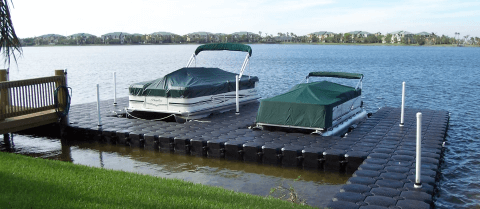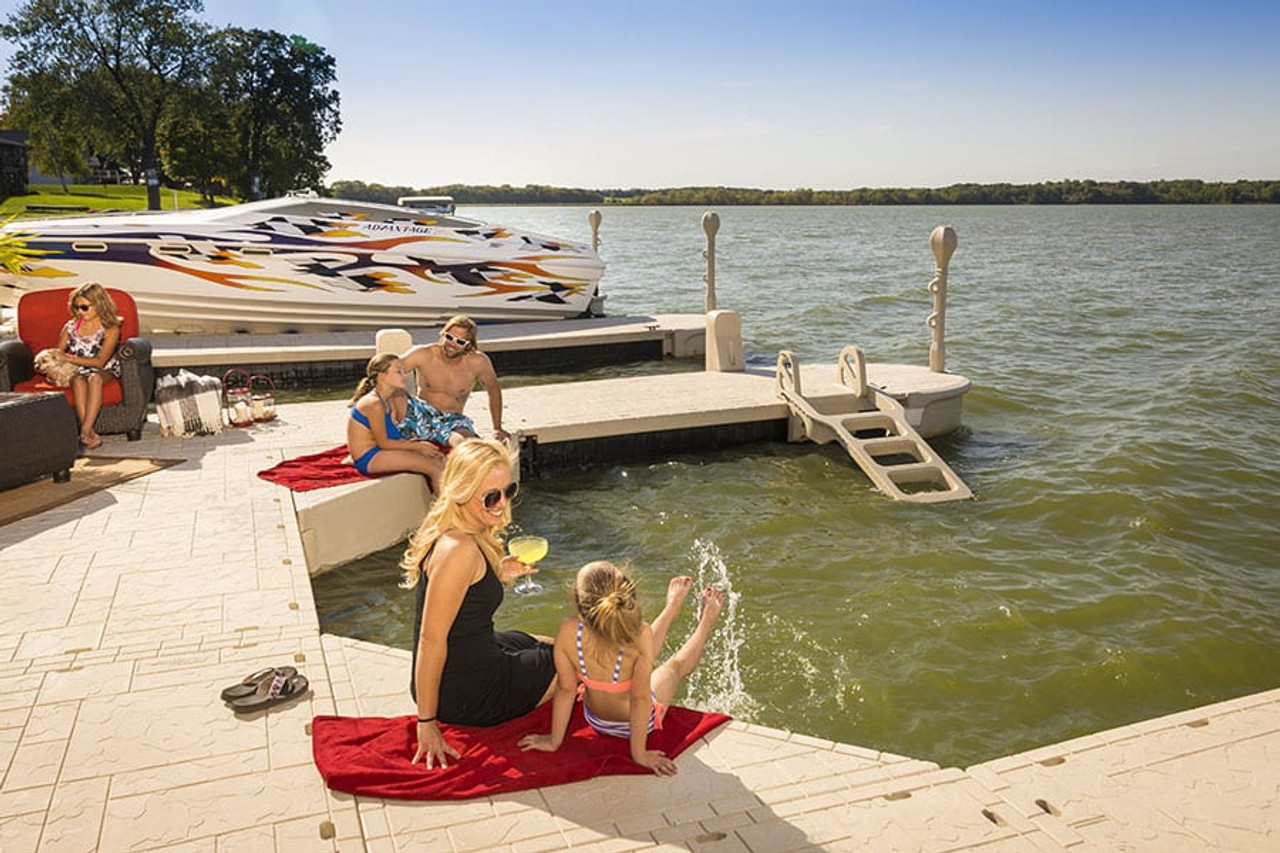Innovative Floating Docks: The Future of Waterfront Gain Access To and Leisure
Innovative Floating Docks: The Future of Waterfront Gain Access To and Leisure
Blog Article
Upgrade Your Beachfront With Long Lasting Floating Docks
Upgrading your beachfront with resilient floating docks can significantly improve both capability and aesthetic appeals, giving a versatile option for numerous water activities. With an array of materials readily available, including low-maintenance options and conventional timber, picking the right dock can enhance your personal style and satisfy sensible demands.
Advantages of Floating Docks
Floating docks offer a wide range of benefits that enhance their appeal for various maritime applications. Among the key advantages is their versatility to changing water degrees - floating dock company. Unlike conventional fixed docks, floating docks fluctuate with the tide, ensuring regular access for watercrafts and watercraft no matter environmental problems. This function considerably reduces the threat of damages to vessels, as they remain firmly anchored even throughout variations in water depth.
Additionally, floating docks are less complicated to transfer and set up, providing adaptability for seasonal or momentary use. Their modular layout enables modification to fit details requirements, whether for private marinas, residential beachfronts, or industrial applications.
In addition, floating docks develop marginal disruption to the water environment, preserving local communities and reducing the chance of disintegration. They likewise offer improved security and stability for customers, as their resilient nature offers a more flexible surface area than rigid structures.
Moreover, floating docks can facilitate a diverse series of tasks, such as angling, swimming, and entertainment boating, making them a valuable asset for waterside advancement. Their convenience and practicality make floating docks a preferred choice for a range of marine jobs.
Selecting the Right Products
Picking suitable products for floating docks is crucial to their longevity, performance, and overall efficiency. When choosing products, think about variables such as ecological direct exposure, maintenance needs, and structural stability. Common materials include timber, plastic, aluminum, and composite alternatives, each offering distinctive benefits and negative aspects.
Timber, while aesthetically pleasing, needs regular upkeep to stop rot and degeneration. Pressure-treated timber can improve longevity, yet it might still yield to water damage in time. Plastic floats, usually made from high-density polyethylene, are immune to deterioration and call for marginal upkeep, making them an eye-catching selection for low-maintenance applications.
Light weight aluminum is an additional feasible choice, known for its toughness and lightweight buildings. It is resistant to rust and can hold up against extreme weather condition conditions, although it might be more pricey than other products. Compound materials incorporate the finest characteristics of wood and plastic, supplying a resilient and low-maintenance alternative that resembles the appearance of timber without the associated downsides.
Eventually, the choice of product should straighten with the intended usage, ecological considerations, and budget restraints, guaranteeing a useful and resilient floating dock that satisfies your particular demands.
Installation Refine Review
The successful setup of a drifting dock counts on mindful planning and implementation, making certain that it operates properly in its intended atmosphere. The primary step includes assessing site problems, consisting of water deepness, shoreline features, and prevailing climate patterns, which will certainly inform the dock design and anchoring system.
Complying with the website analysis, the following stage is to prepare the floating dock parts. This includes setting up the structure, safeguarding floats, and affixing any kind of necessary hardware. It is important to make sure that all links are waterproof and durable to hold up against aquatic problems.
Once the dock is put together, the setup process commences with positioning the dock in the water. This can entail a crane or other training devices, particularly for larger frameworks. Proper positioning is necessary for capability and safety and security.

Upkeep Tips for Durability
Regular upkeep is vital for guaranteeing the long life and ideal efficiency of a floating dock. To attain this, begin with regular inspections at the very least twice a year, concentrating on the over at this website integrity of the dock's framework, consisting of the flotation devices and attaching equipment. Try to find signs of rust, wear, or damage, and resolve any type of problems without delay to avoid further wear and tear.
Cleaning is one more critical element of maintenance. Remove debris, algae, and barnacles from the dock's surface to stop unsafe conditions and maintain visual appeal. Utilize a soft brush and a light cleaning agent to avoid harming the dock's products.
Additionally, make certain that the dock is correctly secured and secured to hold up against seasonal modifications in water levels and weather conditions. Check the anchoring system for security and make modifications as essential.
Enhancing Your Outside Visual
To develop an aesthetically appealing outdoor area, integrating a drifting dock can significantly boost the overall visual of your beachfront home. Floating docks are not only useful yet can also act as a striking centerpiece that matches the natural environments - floating dock builder. Offered in numerous products and styles, these docks can be personalized to match your property's architectural style and landscape
The addition of decorative aspects, such as incorporated illumination or stylish railings, better elevates the dock's visual allure. Take into consideration utilizing all-natural timber surfaces, which blend effortlessly with the environment, or selecting modern-day products like light weight aluminum or composite i loved this decking that use a streamlined, contemporary appearance.
Purposefully putting planters or seating locations on or around the dock can create welcoming rooms that encourage relaxation and pleasure of beachfront views. Furthermore, incorporating shades and structures that integrate with your landscape will create a natural aesthetic throughout your outside location.

Final Thought

Updating your waterfront with sturdy floating docks can considerably improve both capability and appearances, supplying a functional remedy for numerous water activities. Unlike standard set docks, floating docks rise and loss with the trend, guaranteeing constant accessibility for boats and boat no matter of ecological problems.Selecting ideal see this site products for floating docks is important to their durability, efficiency, and general efficiency.As soon as the dock is assembled, the installation process starts with positioning the dock in the water.In summary, floating docks deal numerous advantages, consisting of flexibility to water level adjustments and a selection of material options.
Report this page